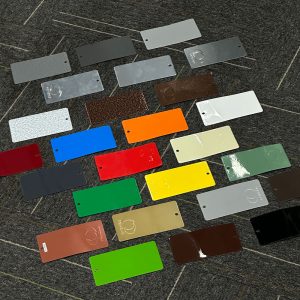The Environmental Impact of Low-Temperature Powder Coatings

In the ever-evolving world of industrial coatings, powder coatings have gained significant traction due to their durability, efficiency, and environmental benefits. While the industry often focuses on the broader advantages of powder coatings, such as their lack of volatile organic compounds (VOCs) and reduced waste, a niche area that deserves more attention is the development and impact of low-temperature powder coatings. This article delves into the unique benefits and environmental implications of these innovative coatings.
What are Low-Temperature Powder Coatings?
Traditional powder coatings require high temperatures, typically between 160°C to 200°C (320°F to 392°F), to cure and form a protective layer on a substrate. This process demands substantial energy consumption, which can be both costly and environmentally taxing. In contrast, low-temperature powder coatings cure at temperatures as low as 120°C (248°F) or even lower, depending on the formulation and the substrate material.
The reduced curing temperature is achieved through advancements in resin chemistry and the use of specialized additives that allow the powder to flow and crosslink at lower temperatures without compromising the coating’s performance. This innovation opens up new possibilities for coating heat-sensitive materials like wood, plastics, and composites, which were previously unsuitable for traditional powder coating processes.
Environmental Benefits
1.
Energy Efficiency: The most apparent environmental advantage of low-temperature powder coatings is their energy efficiency. Lower curing temperatures translate to reduced energy consumption during the manufacturing process. This not only lowers operational costs but also reduces the carbon footprint associated with energy production. According to a study by the Powder Coating Institute, reducing the curing temperature by 20°C can lead to energy savings of up to 15%.
2.
Expanded Material Compatibility: By enabling the coating of heat-sensitive materials, low-temperature powder coatings reduce the need for alternative, often less eco-friendly, coating methods. For instance, wood and plastic components that would typically require solvent-based coatings can now be powder coated, eliminating the VOCs and hazardous waste associated with solvent-based systems.
3.
Waste Reduction: Powder coatings are inherently more efficient in terms of material usage compared to liquid coatings. Overspray can be recycled and reused, minimizing waste. Low-temperature powder coatings further enhance this efficiency by allowing for the coating of complex shapes and intricate designs that might be damaged by high-temperature processes.
4.
Regulatory Compliance: As environmental regulations become increasingly stringent, industries are under pressure to reduce emissions and waste. Low-temperature powder coatings offer a viable solution for companies looking to comply with these regulations without sacrificing performance or increasing costs.
Challenges and Considerations
While the benefits are clear, there are challenges to consider. The formulation of low-temperature powder coatings often requires more complex chemistry, which can increase the initial cost of the materials. Additionally, the curing process may require more precise temperature control to ensure a consistent finish, which could necessitate investment in new equipment or process adjustments.
Moreover, the performance of low-temperature coatings in terms of durability and resistance to environmental factors needs to be thoroughly evaluated. While many formulations now meet or exceed the standards set by traditional coatings, there is still a learning curve for manufacturers and applicators transitioning to these new systems.
Conclusion
Low-temperature powder coatings represent a significant step forward in the quest for more sustainable industrial processes. By reducing energy consumption, expanding material compatibility, and minimizing waste, they offer a compelling alternative to traditional methods. As the industry continues to innovate and address the challenges associated with these coatings, we can expect to see wider adoption and further advancements in this promising field.
In summary, while low-temperature powder coatings may still be a niche segment within the broader powder coating market, their potential environmental benefits and performance capabilities make them a topic worth exploring for anyone interested in sustainable industrial practices. As we move towards a more eco-conscious future, the role of such innovations will only become more critical.

 D5 Creation
D5 Creation